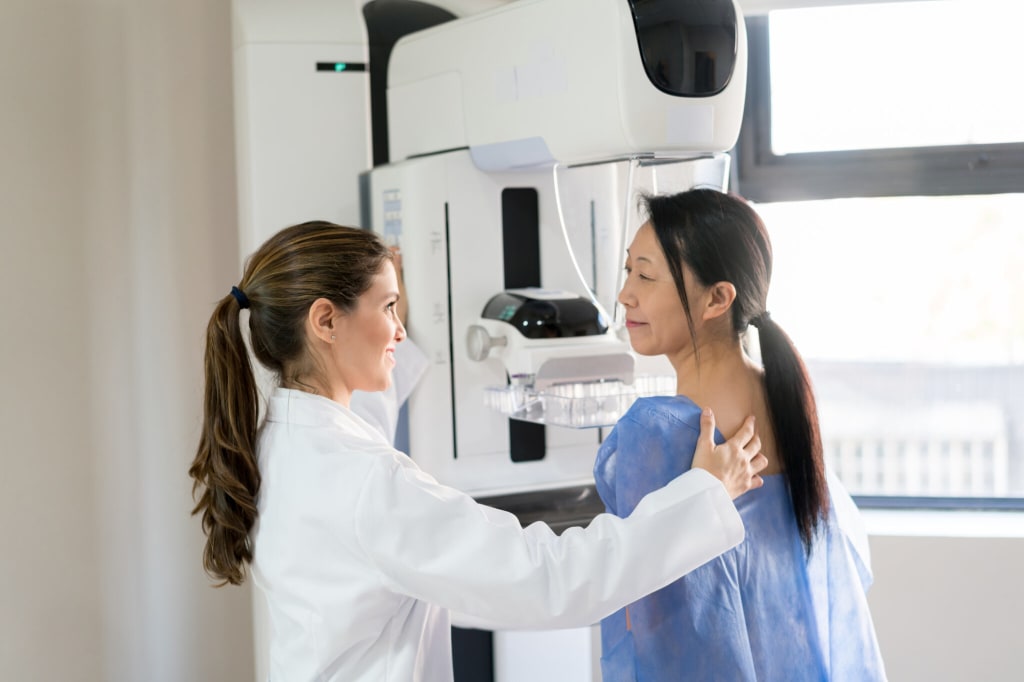Types of Breast Cancer Screening: What You Need to Know
Early detection of breast cancer often leads to better outcomes for patients. In recent years, advances in breast cancer screening and treatment have improved survival rates dramatically.

When breast cancer is found in its early stages, before it has spread to other parts of the body, it is easier to treat. Getting regular screenings as recommended is the most reliable way to find cancer early—sometimes before patients have even begun experiencing symptoms. Patients with breast cancer diagnosed at an earlier stage may be less likely to need aggressive treatments and are more likely to be cured.
“Breast cancer screening is one of the best tools we have for successful breast cancer treatment,” said Dr. Lindsey Beakley, breast surgical oncologist at Southern Cancer Center. “The technology and advances the medical community has made in early detection has made a huge difference in survival rates and overall quality of life.”
Who Should Be Screened for Breast Cancer?
Women at an average risk for developing breast cancer should follow screening guidelines for regular breast cancer screening. Average risk describes women with no personal history of breast cancer, strong family history of breast cancer, or known genetic mutation.
The United States Preventive Services Task Force recommends:
- Women between the ages of 40 and 74 start mammogram screenings annually.
Women with a higher-than-average risk of developing breast cancer are advised to have MRI surveillance starting at age 25 to age 30. These women are also encouraged to begin annual mammograms at age 25 to 40, depending on their individual risk type. This high-risk group may include women who have:
- An increased risk of breast cancer as a result of genetics, including those with the BRCA1 or BRCA2 gene mutations.
- A calculated lifetime risk of 20% or more.
- Exposure to chest radiation at a young age.
Additionally, women diagnosed with breast cancer prior to the age of 50 or those who have a personal history of breast cancer and dense breasts should have annual supplemental breast MRIs. Women who are high risk but are unable to undergo MRI screenings should consider contrast-enhanced mammography.
National recommendations vary slightly by professional organization, and it is important to discuss with your primary care provider what screening frequency is best for you. For more information about high breast cancer risk, visit our High Risk Breast Cancer page .
How Do Physicians Screen for Breast Cancer?
Mammography
Mammography is the main type of screening used to detect breast cancer for women with an average level of risk. Mammograms can often find changes in the breast that could be cancer, even before physical symptoms are present. Different types of mammography may be used to examine the breast:
- Film Mammography—This procedure uses x-rays to take pictures of the breast. This is the conventional type of mammography used for screening. It can be used to check for changes in the breasts, like lumps, cysts, or calcium deposits.
- Digital Mammography— Similar to a film mammography, this screening uses a computer instead of x-rays to take digital photos of the breast. Digital mammography may be preferable for some women with dense breast tissue.
- 2-Dimensional Mammography—X-rays are used to take pictures of the inside of the breast from two different angles. A 2D image of the breast is created by a computer.
- Digital Breast Tomosynthesis—This uses x-rays to take a series of pictures of the breast from multiple angles. Then, a 3D image of the breast is created from those photos using a computer. This can allow doctors to see breast tissue more clearly, especially on women with dense breasts. This is also known as 3D mammography.
Both 2D and 3D forms of mammograms are considered in line with the American Cancer Society screening recommendations. If your mammogram report shows something abnormal in your breast, you will likely need other tests to determine whether it is cancer. See our Abnormal Mammo blog.
Breast Magnetic Resonance Imaging (MRI)
A breast MRI takes pictures of the breast using magnets and radio waves. It may be used in addition to mammograms to screen women in the high-risk category. MRI is a more sensitive imaging study that looks at breast tissue in a different way and because of this, it may pick up more benign (non-cancerous) abnormalities than a mammogram. Breast MRI is not typically used for screening in women who have an average risk level.
Although dense breast tissue may make it difficult to see abnormalities on a mammogram, this screening method still detects most breast cancers. Depending on your breast density and other risk factors, your physician may recommend additional screening procedures like an ultrasound or breast MRI to improve breast cancer detection.
Breast Ultrasound
A breast ultrasound is an additional screening and diagnostic tool that uses sound waves to create images of the inside of the breast. Some breast changes, like cysts, can be easier to see on an ultrasound than on a mammogram. Ultrasounds are noninvasive and can be used to determine whether a mass in the breast is solid or filled with fluid.
While ultrasound is not used as a part of routine screening for breast cancer, it may be used as a secondary screening tool for women with dense breasts who have had an abnormal area detected on a mammogram.
Ask Your Physician About Screening Recommendations
If you have questions about breast cancer screening, your mammogram report, or any risk factors you may have, please consult your physician. They can help you determine the most appropriate screening guidelines for you.
